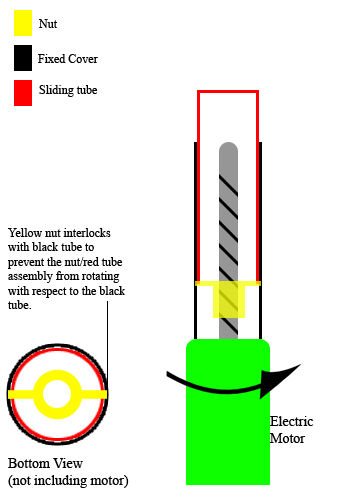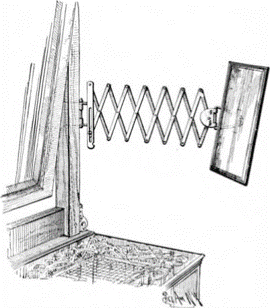Deployment Mechanisms
This page has been inspired from here
Trigger Mechanisms
Pyrotechnic Cables and Bolt Cutters
This mechanism employs a small controlled expansion to propel a bolt towards a cable placed on an anvil. The bolt strikes the cable and cuts it, thus releasing the deployable that the cable was securing.
Advantages
They are quick, small and simple in use
Disadvantages
The explosion may generate a lot of internal force and create hazards for the satellite
A very good animation can be found here.
Burn Wire Mechanism
The release mechanism utilizes a compressed spring system to ensure permanent contact with the cable that is securing a deployable. When heated the burn wire would cut through the cable due to pre-compressed spring. After a successful cut the spring extends to its natural length. Usually the burn wire is made of Nichrome, which is heated to high temperature and the cable is made of Vectran (A high strength, high thermal stability and low creep fiber)
Advantages
Small and relatively safer than pyrotechnic charge
Disadvantages
May fail to cut through the wire in one shot i.e. unreliable (To tackle this, usually redundant setups are used to ensure that the mechanism works well)
For more information and graphics on burn wire mechanism, click here.
Shape Memory Alloy (SMA)

A SMA is an alloy that “remembers” its original shape when it was formed and returns to it from its deformed state when heated. There are multiple actuators already in use as well as several under development that exploit use of SMAs for release of the deployable.
Some of the mechanisms that use SMAs are listed:
- Linear Actuators: A structure is made of a hollow cylinder filled with a deformed SMA (usually in shape of a spring), when heated the SMA expands and pushes a pin, which caps the cylinder, outward and hence initiating the deployment.
- Frangibolt: A deployable is secured with the help of a bolt inserted through an annular cylinder made of a deformed SMA. Heating causes the SMA to expand and break the bolt, thus releasing the deployable.
Advantages
These are small in size and usually have a quick release time
Disadvantages
They are not yet tested extensively in space and are in development, some parts are too small and difficult to manufacture hence are expensive currently. Also they may be susceptible to external rise in temperature and cause untimely deployment
More information about Shape Memory Alloys and their space heritage can be found here.
Paraffin release mechanism
This mechanism uses the property of paraffin wax to expand greatly on heating it. This causes it to compress a cylindrical casing which holds a pin initially. As the casing (made of polymer) gets squeezed it releases the pin, slowly triggering the deployment
Advantages
Release without much recoil
Disadvantages
Slow deployment, spontaneous trigger at elevated temperature
More information can be found here.
Deployment Mechanisms
Here are some commonly used mechanisms:
- Coilable Mast: This an important mechanism for deployment of structures such as antennas. The mast is flexible in nature and coiled on a reel to reduce the dimension during launch. A good image can be found here.
- Lazy Tongs: The actual definition for this being scissor-like extendable structure used to reach things at a distance. These type of structures are employed when space constraints are imposed on one dimension of structures.

- Telescopic: This mechanism uses compression of a long structure into smaller structure by sliding one part into another.
- Foldable Mast: The structure of the mast is broken into smaller parts of the shape of a triangle and connected with the help of plastic flexible hinges to stiffen the folded structure once deployed. Good images can be found here.
If you are done reading this page, you can go back to Mechanical Subsystem
